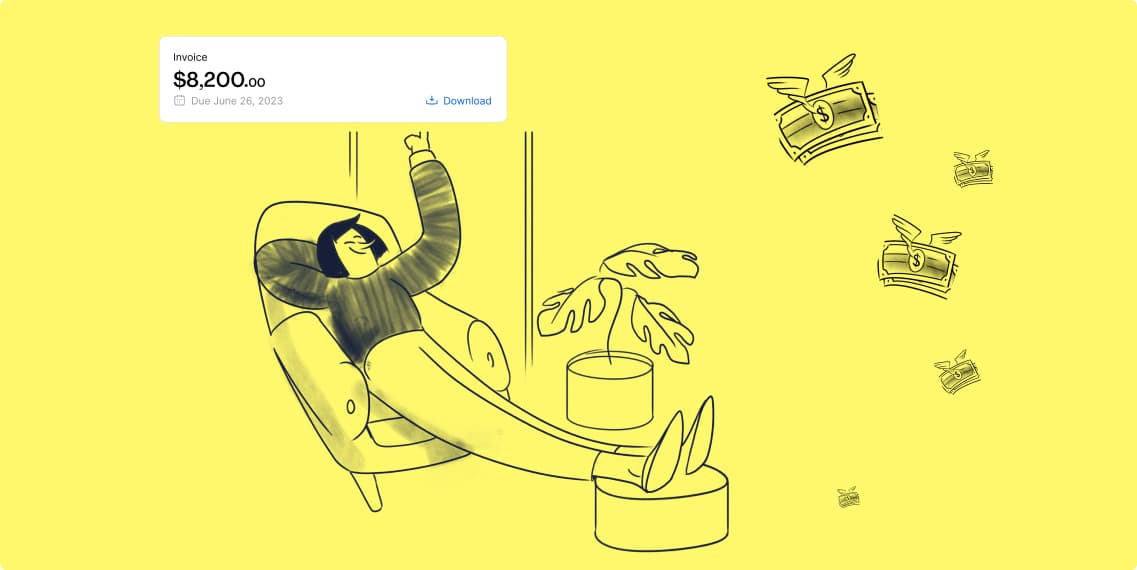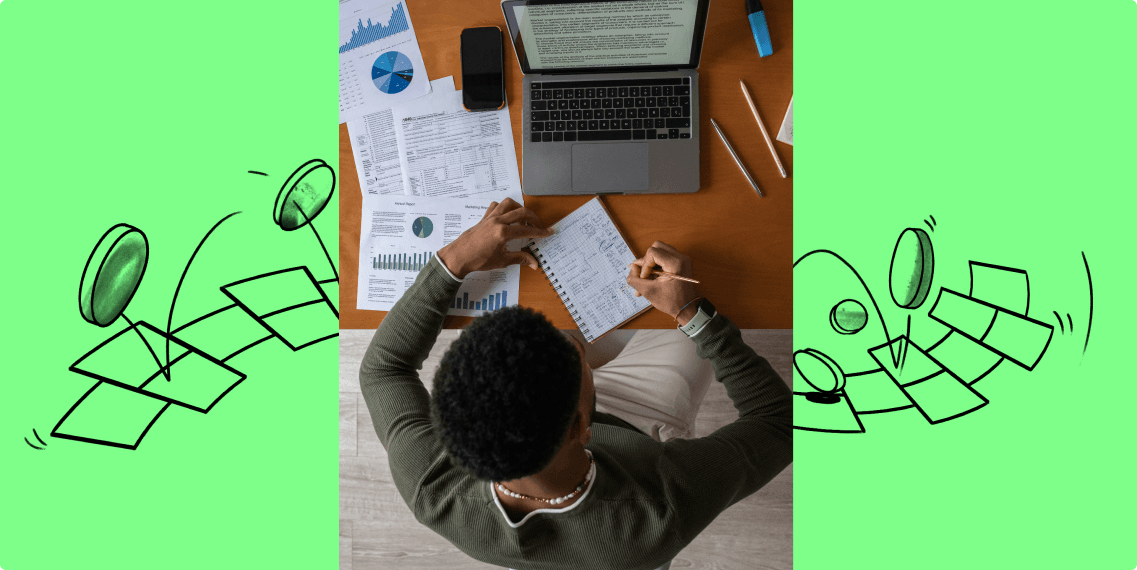What You’ll Learn:
- The step-by-step process to collect unpaid invoices
- Tips for maintaining client relations during collections
- How to reduce future overdue invoices
Collecting unpaid invoices can be one of the most frustrating tasks for any business owner. When a customer doesn’t pay their bill, it affects your bottom line and your company’s cash flow. But overdue invoices don’t have to cause stress or affect your growth.
Learn how to collect unpaid invoices and reduce future payment delays. Here’s your guide to keeping cash flow steady and your business thriving.
Step-by-step guide to collecting unpaid invoices
If you’ve found yourself on this page, you’ve probably already followed up with your customer using the traditional methods:
- A friendly reminder about the past due invoice
- A formal follow-up that includes the original invoice, the payment terms, and any late fees specified in your agreement
If the methods above don’t work, it’s time to take further action.
1. Send a final reminder
When an invoice remains unpaid after your initial communication, it’s time to send a final reminder. Language should be clear and convey a sense of urgency, such as, “Payment is due within 7 days to avoid further action.” Make sure to include a detailed breakdown of the outstanding amount, including the original invoice amount, any late fees, and accrued interest, if applicable.
How long should you wait for a client to pay an invoice?
It’s typically reasonable to wait 30 to 60 days from the original due date before taking this step. Make sure to refer to your client agreement terms and industry best practices.
2. Offer incentives or payment plans
For clients struggling with finances, a small discount of 5–10% can motivate customers to settle the account while preserving goodwill. A structured payment plan (where the amount due is broken into manageable installments over a set period) can help clients who want to pay but need flexibility. This approach saves time while encouraging future business.
3. Leverage a payment platform
They say time is money, but the right software can help you save both. Hopscotch is an invoicing platform that can track payments, send automated reminders, and set up recurring billing with minimal effort. Automation saves time and reduces the stress of following up with clients one by one. Payment platforms can help small businesses collect more on-time payments and maintain steady cash flow so they can concentrate on growth instead of chasing down unpaid invoices.
4. Escalate to collection agencies or legal action
If you have exhausted all other efforts, it might be time to turn to a collections agency or take legal action. Collection agencies can help you recover unpaid funds, but it’s wise to consider the costs and potential impact on client relations. Agencies may charge as much as 20% to 50% of the collected amount as a fee for their service.
How do you know when to send unpaid invoices to collections?
Make sure you’re familiar with your invoice payment terms and due dates—these will guide you in choosing when to start the process. Collection agencies generally won’t take on your case until the invoice is 60–90 days overdue.
As a last resort, small claims court or arbitration might be a feasible recovery option. These options are most useful for large amounts but require time and legal fees. The potential strain on professional relationships should also be considered before pursuing these options.
Get approved for Hopscotch Flow and never worry about overdue invoices again
Tips for Maintaining Client Relationships During Collections
In some cases, knowing how to collect past-due invoices is the easy part. Doing so while maintaining client relationships can be a little more difficult. Follow these tips:
- Keep communication professional. Calm, solution-oriented language is the key to success in any business interaction. Remember to avoid emotional or accusatory language that could escalate tension. Customer service and satisfaction should always be emphasized.
- Be consistent and persistent. Regular follow-ups with customers are important to ensure that debts are paid while keeping relationships positive. Automated systems can persistently remind customers about upcoming payments.
- Know when to cut ties. A time may come when a client relationship is no longer worth maintaining. Red flags, such as nonpayment, repeated late payments, or uncooperative behavior, are fair reasons to walk away from an unhealthy or risky client dynamic.
How to Reduce Future Unpaid Invoices
Take proactive measures
Have customers pay for the service or product in advance. Full payment upfront eliminates invoicing and the risk of overdue bills. If paying the full amount isn’t feasible, consider requiring a good-faith deposit or partial payment.
And of course, you should set clear payment terms in a contract beforehand and include them on every invoice. Clearly stated payment terms should include due dates, payment methods, and late fees.
Automate with technology
If you feel like you spend more time following up on unpaid invoices than actual client work, it’s time to revisit the heart of your payment process. Hopscotch can automate payment reminders and track invoices to save you time and bring in money. You can also use Hopscotch read receipts to know when a client has viewed your payment notification, and identify a strategic time to follow up. Take advantage of this technology to streamline unpaid invoice collection.
Quick tip: Don’t forget to regularly review client payment histories to identify and avoid risky accounts.
Get paid faster with Hopscotch Flow
Cash flow management doesn’t have to be complicated. Hopscotch Flow gives you fast, flexible access to working capital based on your total outstanding receivables with no hard credit check required. You can get paid before a client pays you without ruffling feathers—Flow is completely private.
Learn more about Flow and put your instant cash flow to work.
Bret Lawrence
Writer
Bret Lawrence writes about invoicing and cash flow management at Hopscotch. Her previous roles include senior financial writer at Better Mortgage, where she covered lending and the home buying process. Her writing is not financial advice.


